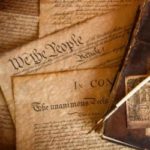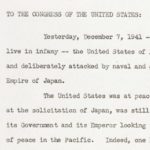This lesson will explore the implementation of the war-making power from the first declared war under the Constitution—the War of 1812—to the Iraq War. Using primary sources, students will investigate how the constitutional powers to initiate war have been exercised by the legislative and executive branches at several key moments in American history. They will also evaluate why and how the balance of authority in initiating war has changed over time, and the current balance of power.
Major Events of the Cold War
In this lesson, students will use short video clips to learn about major events occurring during the Cold War, the causes of these events, and their impact on the U.S., Soviet Union, and the world. Students will summarize this information by providing a written response that analyzes the legacy of the Cold War.
Memorial Day Lesson Plans & Resources

Find new ways to discover the meaning of Memorial Day with students using the free K-12 resources in this curated collection from Share My Lesson. The lessons and activities honor military men and women who died while on duty and explore the wars they served in, as well as the impact on their families and our country.
Key Constitutional Concepts

This three-part documentary discusses why and how the Constitution was created at the Constitutional Convention and explores the protection of individuals’ rights in the Supreme Court case Gideon v. Wainwright and limits on presidential power through checks and balances in the Supreme Court case Youngstown v. Sawyer.
Each segment is about 20 minutes.
Closed captions available in multiple languages, including Spanish.
